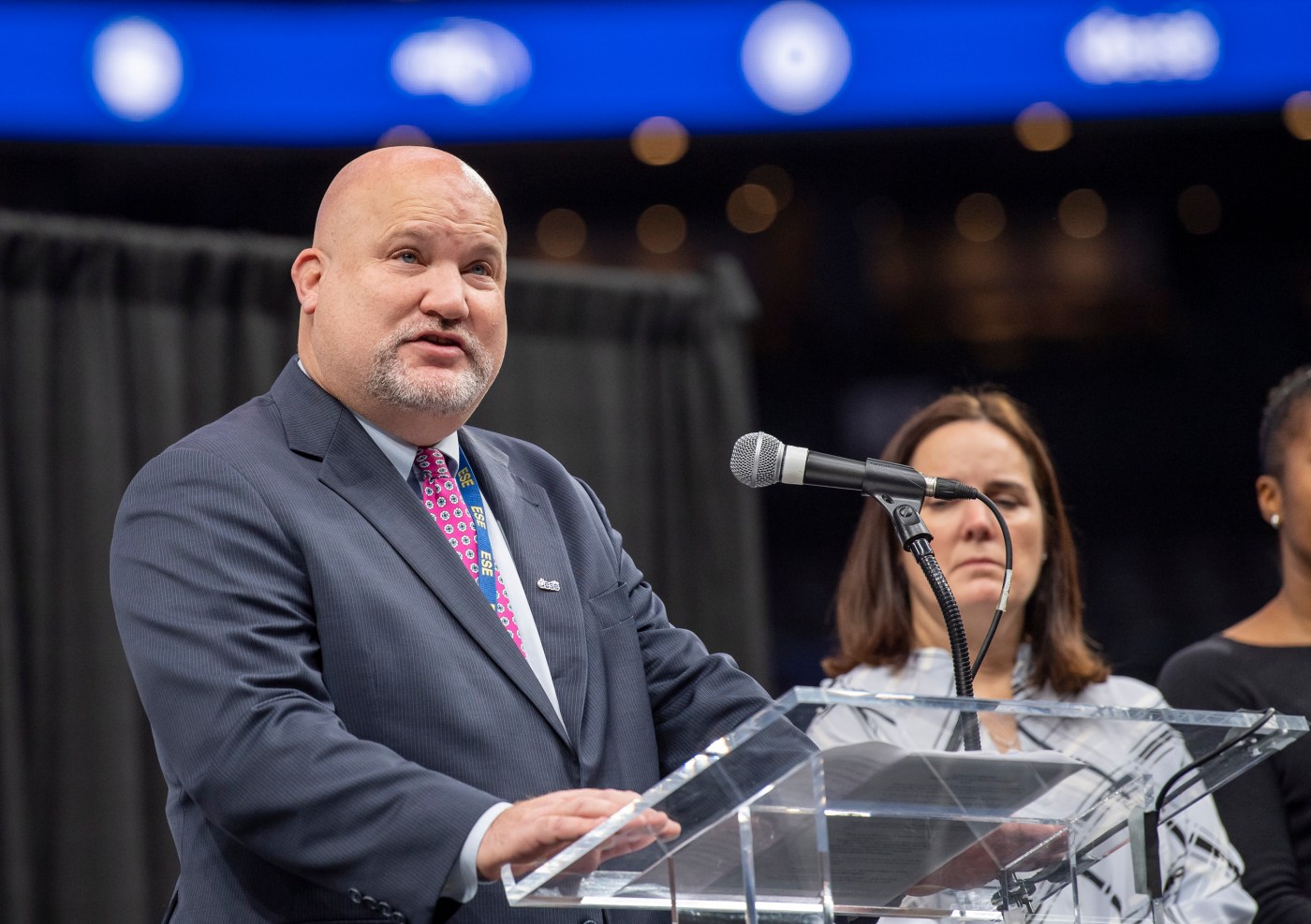
Education officials advance plan to prioritize chronic absenteeism, get students back in class
As unprecedented pandemic-era spikes in absenteeism linger in schools around the state, Education Department officials are looking to redirect district accountability measures, pour in funds and move the issue to the front of the line.
“I am considering proposing increasing the weight of chronic absenteeism in the district and school accountability system to highlight the importance and urgency of the issue,” said Education Commissioner Jeffrey Riley at Tuesday’s Board of Elementary and Secondary Education meeting. “At the same time, we believe in kind of reciprocal accountability. And we want to make sure that we put out grants and offer the technical assistance — like webinars and other things — to support our districts as they better engage our families.
“This is not about ‘gotcha’ or blame in any way, shape or form,” Riley continued. “This is about an educational community, focusing on an issue that is germane to all of us.”
The discussion this week follows DESE’s release of 2022-23 chronic absenteeism data last month. At the October meeting, Riley proposed a broad shift from current “underperforming” accountability metrics given to schools to “attendance priority schools.” On Tuesday, he shifted focus to the procedure to more narrowly adjust the school accountability metrics, noting federal mandates for the system.
A student is considered chronically absent if they miss at least 10% of school days, usually 18 days a school year.
Before the pandemic, chronic absenteeism was 13% across Massachusetts schools, said chief officer of education data Rob Curtin. That number peaked during 2021-22 at just under 30% and dropped to 22% last school year.
“Close to 200,000 (chronically absent) students — if you think about that each one of those students has generally missed at least 18 days, you’re looking at four million days of school missed by the students,” said Curtin.
The problem spreads across all grade levels — elementary students jumped from about 10% pre-pandemic to over 20% now, and high schoolers moved from 23% to nearly 30% now, officials detailed.
Despite common misconceptions, Curtin said, the issue doesn’t concentrate in urban districts. About three-fourths of schools across all districts meet the state’s standard of “attendance priority schools” with high levels of chronic absenteeism, officials said.
High rates of absenteeism have been tied to risks of lower literacy, academic achievement and graduation, among others. The measurable impact of the recent rise, Curtin said, is “startling.”
MCAS exam scores broadly reflect a wide gap between chronically absent students and others, Curtin said. On the 2023 English MCAS exam for grades three to eight, for instance, 46% of non-chronically absent students and only 25% of chronically absent students met or exceeded expectations, Curtin presented.
The state is looking to step up efforts to educate and communicate with families on the issue. Riley noted this involves directing $4 million to districts to invest in things like technical assistance and rolling out a statewide communications strategy including public service billboards.
Another vital “lever” the department has to move the issue, officials said, is the state’s accountability system for districts. The system uses targets for attendance, MCAS scores, graduation rates, transportation and other metrics to evaluate districts’ performance and direct funding.
Attendance is currently weighted 10% of districts’ scores, but officials said the weighting could shift to prioritize the problem area. Federal requirements mandate high level of focus on measures of achievement and growth, Curtin said, but there is some room to redirect priorities in 2024.
“There’s no doubt that both sides of this increasing the weighting on the chronic absenteeism would have a substantive effect on the accountability determinations that we make,” Curtin said, noting the complexity of the process.
Related Articles
Poll: Massachusetts parents report stark disparities in post-secondary planning knowledge across race and income
Wellesley College faces investigation after antisemitism complaint
Healey boosts aid by $62M at UMass, state schools
Andover teachers reach tentative contract deal with town after five-day strike
Andover schools closed as teacher strike continues
Before making a formal recommendation, the department would go through a review and public comment period on the change, Curtin said. The weighting shift would then require a vote from the Board and federal approval.
Board members echoed previous support for moving to prioritize attendance, questioning broadly the timeline of the process and some expressing “disappointment” that there was no formal proposal yet.
“No matter what curriculum changes, or other policy changes, or funding or grants that we throw at schools, the thing is that kids aren’t there,” said student member Ela Gardiner. “And that’s the problem that we’re facing.”
Chronic absenteeism rates are still at 22% across the state, Education Department officials said Tuesday, calling for an increased response to the issue. (Staff Photo By Nancy Lane/MediaNews Group/Boston Herald)


